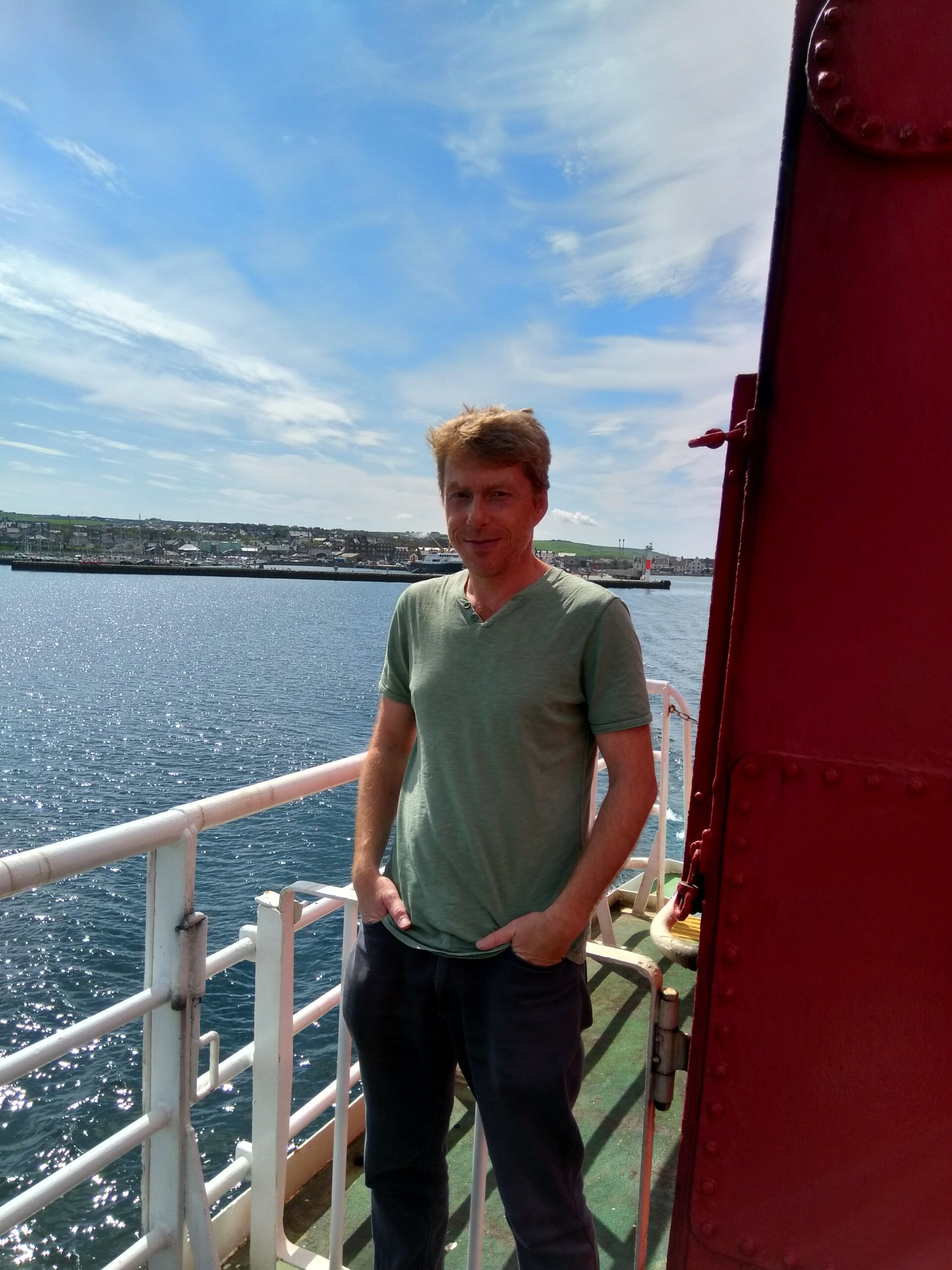There’s nowhere quite like the islands of Outer Hebrides – the crystal-clear beauty of the waters, the wide stretches of white sand, the rare isolation. Among all this is wildlife galore – a riot of eagles, otters, gannets, red deer, butterflies and more. If you seek pure nature, there is no better place to go.
Perhaps it’s all the peaty soil that deadens nature’s background chatter but the silence on South Uist can be resounding. A mute swan skims down on to Loch Druidibeg and sails away, unruffled, its neck long and stiff, its body still, as if dragged along by an unseen underwater pulley. A black-throated diver flies low towards its nest, allowing its flight feathers to leave momentary rings on the water.
The inky waters are backlit by a setting sun that throws a sensational collage of colour and diamond-sharp shadows over the flanks of Beinn Mhòr, the highest mountain on the island.
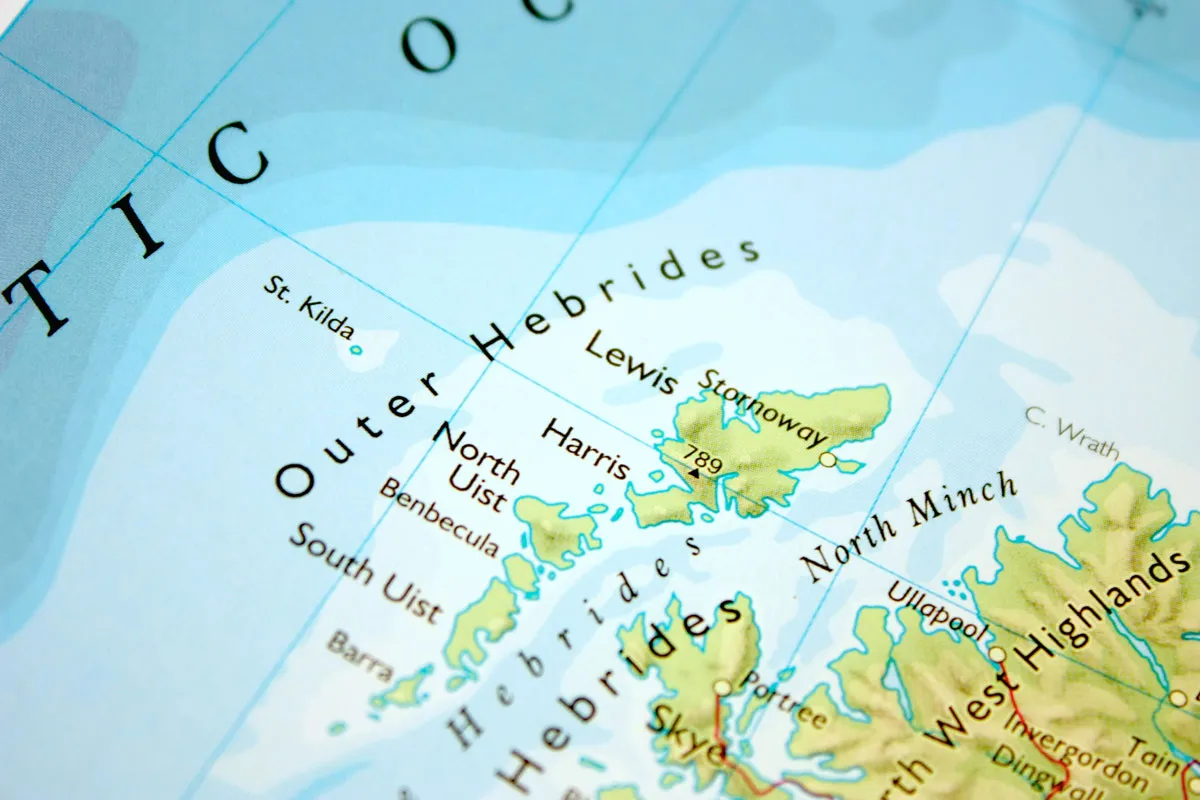
South Uist is one of 119 islands (14 inhabited) that comprise the Outer Hebrides, an archipelago that runs 130 miles from north to south. They lie to the west of the Minch and the Sea of the Hebrides, which separate them from the mainland and islands such as Mull, Rum and Skye. They sit on the periphery of the British Isles and it’s heartening to discover that they look the part. It’s late evening in late May and a half-light now prevails that will all but fend off the darkness before dawn creeps back at around 3.30am. I spot golden plovers, pass a picked-clean sheep’s skull. Isolated homesteads appear to have been dropped like pieces of Lego from the skies.
Wild and free
At this time of year, the island wildlife is at its richest: undisturbed by mass tourism, thriving amid favourable habitats and on a mission to breed. The spectacle is nothing less than sensational; the islands really are as good as anywhere to see and hear wildlife in the UK; visitors are entitled to feel rather short-changed should they fail to see red deer, golden and white-tailed eagles and otters.
I often watch UK nature documentaries that spin yarns of the hours and days of effort required to secure wildlife footage. “For heaven’s sake,” I want to shout at the screen, “just go to the Outer Hebrides, you’ll get everything you need there.”
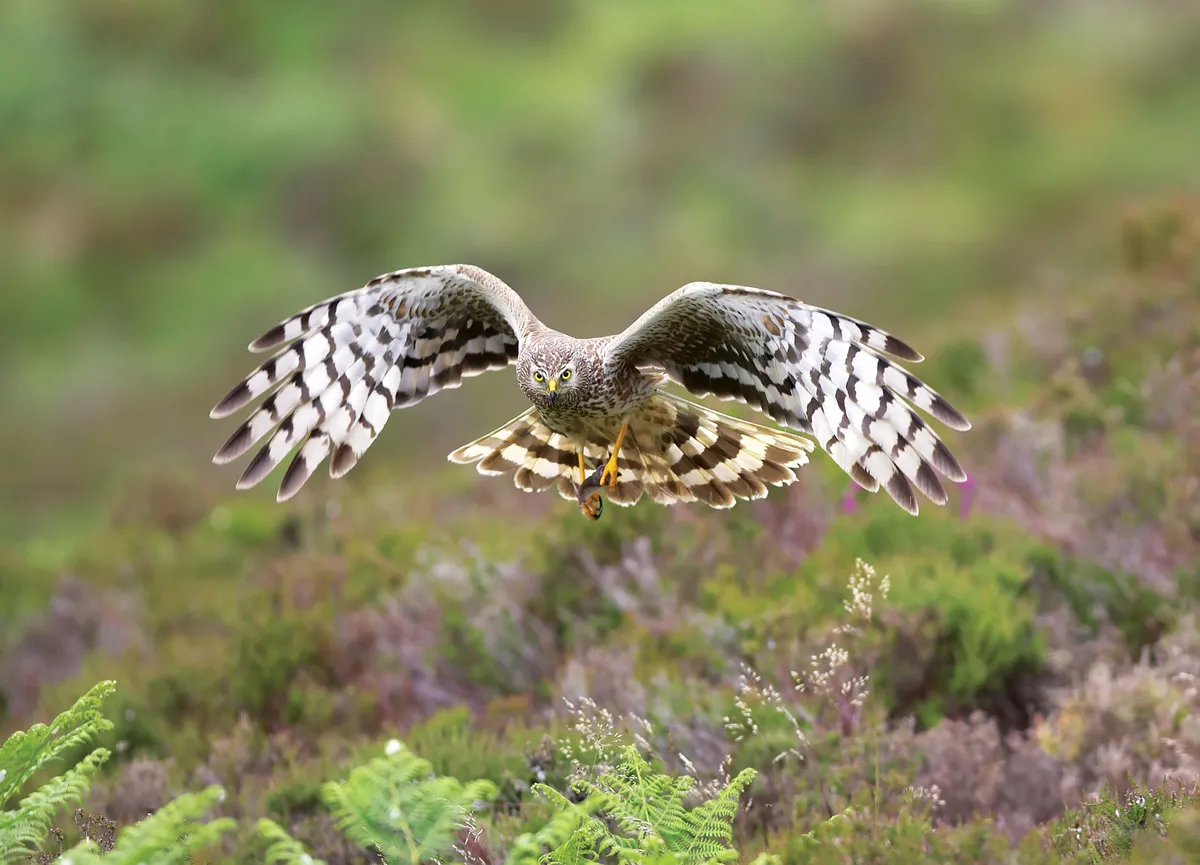
Take red deer: you may spot them while walking the hills but you are just as likely to see them by the roadside, or from a cosy cafe. The triangular ‘otters crossing’ traffic signs are not just there for holiday snaps: you have every chance of seeing otters by the causeways that link the southern islands.
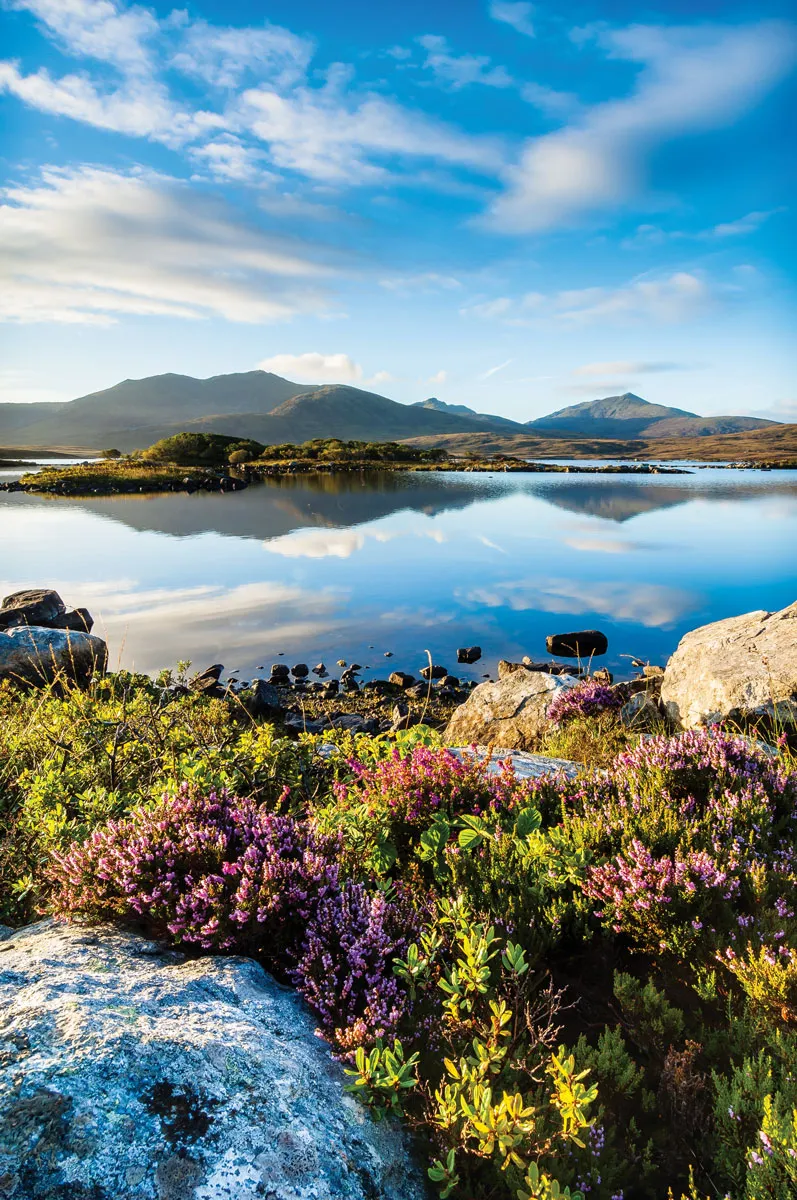
For half an hour I make my way across the moors that surround Loch Druidibeg towards the sea. Mountains behind me, I enter a land of undulating flatness, as though unseen but gentle eddies are rolling along underneath the surface, causing fields to rise up like the crest of waves, hiding the Atlantic Ocean until I’m almost upon it. The landscape slowly shifts from a dulled golden monochrome to a mixture of shamrock and malachite green: the moors are giving way to the long strips of sea meadows and coastal grasslands known as the machair.
Living carpet
Largely comprising tiny shell fragments topped with marram grass, the machair bursts with wildflowers as spring gives way to summer. A single square metre can contain up to 45 species: scaled up, you are confronted with millions of bright red and white clover, buttercups, harebells, vetches, gentians and orchids.
The birdlife also differs on the machair: dunlin and ringed plover thrive here, oystercatchers peep-peep their way overhead and lapwings tumble earthwards in a thrilling spiral intended to deter predators. Raptors bide their time in the moors and mountains, then suddenly scorch down on to the machair in a dramatic interaction of prey and avian predators.
In all, more than 320 species of bird have been recorded on the Outer Hebrides and at least 100 species breed here. Away from Stornoway, I’ve rarely been out of earshot of cuckoos, while gannets scythe their way through offshore waters and sea lochs the length and breadth of the islands. Extreme butterflies are something of a feature and the low use of insecticides is a major factor in the wellbeing of species such as the green-veined white in this rigorous climate. The common blue has a Hebridean version thought to be the largest of all of this species.
Ancient presence
A bewitching sense of remoteness always accompanies me through these islands: the beaches are unsurpassed by any other in the UK and deliver many Robinson Crusoe moments where my footprints are the only ones on the sand. Yet there is even more to the Outer Hebrides than their natural wonders. The ancient heritage feels tangible, from Iron Age brochs to Celtic chapels and beehive houses of age-old provenance. Many croft houses stand decaying, gently being dismantled by the elements more than 150 years after they were abandoned during the Clearances. The rocks of Lewisian gneiss, at nearly three billion years old, are among the most ancient our planet has to offer.
Food, too, is a revelation and a food trail embraces community cafés run by volunteers and chefs who take their fare extremely seriously. You really have not tasted salmon until you have eaten it here. The islanders exude independent resilience, warmth and hospitality, while Gaelic language and culture is celebrated by young and old. If you fall in tune with the Outer Hebrides in May, the world has few places more enchanting to offer you.
The inhabited islands of the Outer Hebrides all have their own distinct character and charm – and all have secrets waiting to be discovered.
Lewis
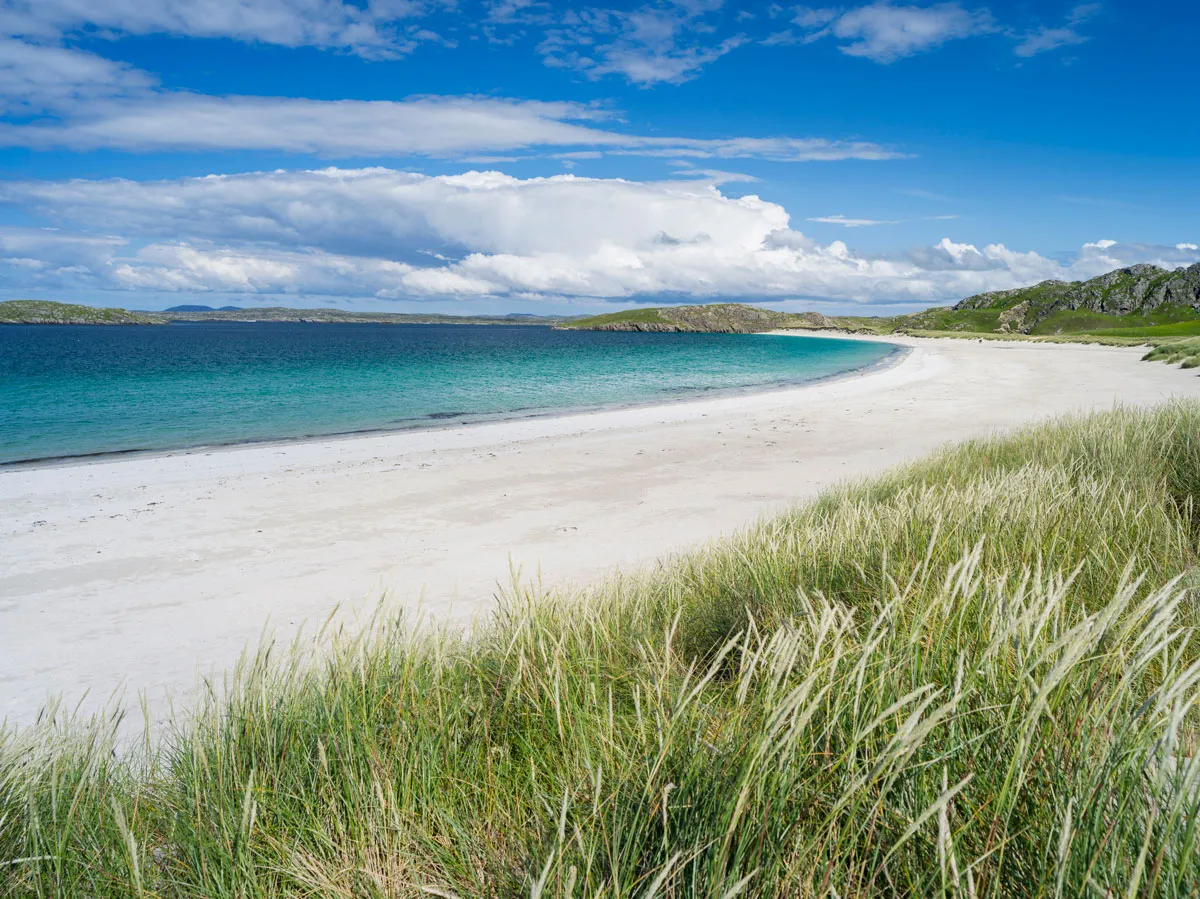
In the south-west of Lewis you’ll find the region of Uig, a land of vast moors, high hills and violently rugged coastal scenery. Deep in the hinterland of Uig, and accessible along boggy tracks, lies a hidden collection of shielings, beehive-shaped dwellings whose origins reach back into prehistory. They are hauntingly located by a burn a mile south of Loch Morsgail and only visible when you are almost upon them.
Harris

The beaches of South Harris are the show-stoppers of the Outer Hebrides. A mesmerising array of beaches radiates from the Sound of Luskentyre with shell-sand bays, shallow lagoons formed by tidal waters and ever-changing dunes. By contrast the lesser-visited east coast, known as The Bays (Na Bàigh), is a magnificent moonscape where ice-moulded boulders burp up through the ground. Isolated crofts here are often home to excellent artists’ studios.
North Uist and Berneray
North Uist comprises so many freshwater and sea lochs that it can be hard not to see it as a jumble of islets loosely knitted together. On the west coast lies the RSPB reserve of Balranald. In spring, the machair here is home to a sensational array of wildlife: skuas and divers out at sea and huge flocks of turnstone, purple sandpiper, dunlin and sanderling huddle on the shoreline. You will almost certainly hear the rasping call of the corncrake, a
bird lost to so many places across the UK.
Don’t overlook the perfect gem of nearby Berneray, where people often get hooked by the solitude and sweeping majesty of West Beach.
Benbecula
Often described as “more loch than rock”, Benbecula’s flatlands are interrupted by the sizeable hump of Ruabhal, a 124m-high hill (giving rise to the Gaelic name for the island, Beinn Na Faoghla, or ‘the mountain of the fords’). Easily climbed, Ruabhal repays you with magnificent views up and down the island chain . The flanks are nesting places for hen harriers: as the chicks hatch, you may be treated to the sight of a food pass, where the male hen harrier passes prey in mid-air to its mate. Short-eared owls frequently fly over the moors, hunting in broad daylight. Both species are so common you may well encounter them as you carry out mundane chores such as filling the car up with petrol.
South Uist
Apart from its wildlife, South Uist has much to offer visitors. These include the Big Garden (An Gàrradh Mòr), an eye-catching, walled, permaculture garden. If you’re self-catering, order a leg of hogget (one-year-old) lamb from them. The Kildonan Museum meanwhile is one of the world’s great small museums and amounts to a haunting eulogy for Uist life and culture. Check out the mattresses made from seaweed.
Eriskay
Hike around tiny Eriskay’s delightfully lumpy roads and moors, photograph the eponymous ponies and order a tight-fitting Eriskay jersey at the excellent community shop. Whisky bottles retrieved from a shipwreck – a saga told in the Ealing Comedy Whisky Galore! – can be viewed at the friendly island pub, the Politician.
Barra and Vatersay
Don’t miss a curry from the outstanding Cafe Kisimul in Castlebay, officially the best curry house in Scotland. Right at the bottom of this island chain is Vatersay, conjoined by a causeway to Barra. The east-facing bay here is arguably the most beautiful of all the sands you will encounter. On a sunny day, the shallow waters resemble the cover of a Caribbean travel brochure.
Experiences not to miss
From coasteering to kite-surfing, the Outer Hebrides are one vast, open – if rather wild – playground. Cyclists (visitouterhebrides.co.uk, then search for ‘Hebridean Way Cycling Route’) and walkers (www.hebrideanway.co.uk) have their own long-distance routes to follow from Lewis to
Barra. Other superb walks are located in the North Harris Hills and the coast of Lewis while cyclists eulogise about the quiet lanes of the
South Lochs on Lewis.
Anglers (fishhebrides.com) can pick from 2,000 fishable lochs while Clearwater Paddling on Barra (01871 810443; clearwaterpaddling.com) offers enchanting kayaking trips to uninhabited islands. A good local guide such as Chris Ryan of Out and About Tours (01851 612288; tourguide-hebrides.co.uk) can take you hill walking or reveal archaeological sites. Boat tours visit offshore islands such as the Monachs and the Shiants or venture to St Kilda.
Want to move there?
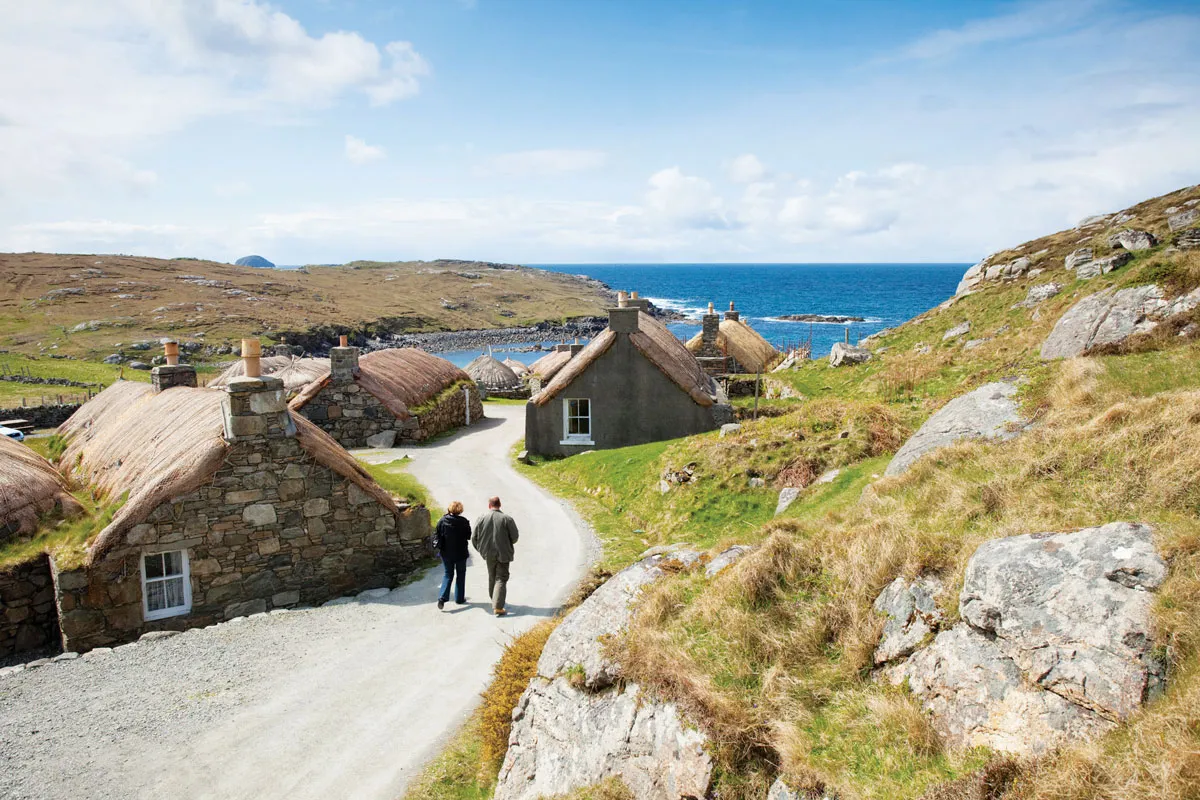
The Outer Hebrides can easily enchant you and visitors have been known to make impulsive life-changing decisions to relocate here. There is usually work for key workers – teachers, doctors – but for most people, self-sufficiency and creativity is the order of the day: running a croft, working in a shop, setting up a seasonal café, or all three. Well-run B&Bs universally thrive.
The islands are fertile ground for arts and crafts types and low property prices mean low overheads for start-ups. Local communities welcome incomers, especially those keen to buy into Gaelic culture and to respect traditional values.
A three-bedroom house in Stornoway costs around £160,000; a high-finish detached four-bed £330,000; £250,000 will buy you not only a house on any island but perhaps a café or other business, too.
The main caveat is weather: winter gales can blow for 10 days without relenting. Stay a couple of weeks in January as part of your reconnaissance.
Where to stay

Budget Stay
Galson Farm
Charming 18th-century farmhouse in the north-west of Lewis offers rooms with views of coast and moors. Excellent candlelit dinners and a warm welcome from the hosts. 01851 850492; galsonfarm.co.uk
Campsite
Lickisto Blackhouse camping
Small but enchanting campsite in The Bays on South Harris. Pitches are separated by wild grasses (glorious in summer). Freshly baked bread available. 01859 530485; www.freewebs.com/vanvon
B&B
Heron Point
Top-class B&B near the southernmost tip of South Uist run by friendly owners. Views over the loch, local art on the walls, fishing and breakfasts (owner Andy is a trained chef) are superb. Lochboisdale, South Uist.
01878 700073; heronpoint.co.uk
Self-catering cottage
Sound of Harris
Book one of two stylish self-catering houses with Harris tweed trimmings, floor to ceiling windows and a Japanese soak tub. Sleeps two. Sound of Harris near Leverburgh, South Harris. soundofharris.co.uk
B&B
Heron Point
Top-class B&B near the southernmost tip of South Uist run by friendly owners. Views over the loch, local art on the walls, fishing and breakfasts (owner Andy is a trained chef) are superb. Lochboisdale, South Uist.
01878 700073; heronpoint.co.uk
Self-catering cottage
Sound of Harris
Book one of two stylish self-catering houses with Harris tweed trimmings, floor to ceiling windows and a Japanese soak tub. Sleeps two. Sound of Harris near Leverburgh, South Harris. soundofharris.co.uk
Upmarket hotel
Langass Lodge
Langass Lodge on North Uist has mounted stag heads, a cosy bar and snug rooms. Stunning location by the loch of the same name. 01876 580285; langasslodge.co.uk
Where to eat and drink
Digby Chick
Guinea fowl lollipops and pigeon breast with Stornoway black pudding are among eye-catching offerings at this charming restaurant in Stornoway. The best choice for a high-class meal. 01851 700026; digbychick.co.uk.uk
40 North
Fine-dining takeaway food from this superb croft kitchen on Lewis. Tempura prawns vie with smoked beef and pork. 01851 710424; www.40northfoods.co.uk Look out for a similar, unrelated, venture, Croft 36 on South Harris. croft36.com
Hebscape
Wonderful gallery, walls decorated with stunning landscape photography by Darren Cole whose partner Chris Griffiths – a master baker – serves white chocolate cookies to munch while overlooking Loch Tarbert. 01859 502363; hebscapegallery.co.uk
A local speciality
Abhainn Dearg Distillery
Take a tour of the Abhainn Dearg (Red River) distillery, atmospherically tucked away in a valley in remote Uig on Lewis. This smattering
of unprettified barn buildings looks exactly how an illegal whisky distillery of years gone by might have done. Charismatic owner Marko Tayburn proudly declares that all ingredients – from the plough to the bottle – are sourced on the island. 01851 672429; abhainndearg.co.uk
Getting there
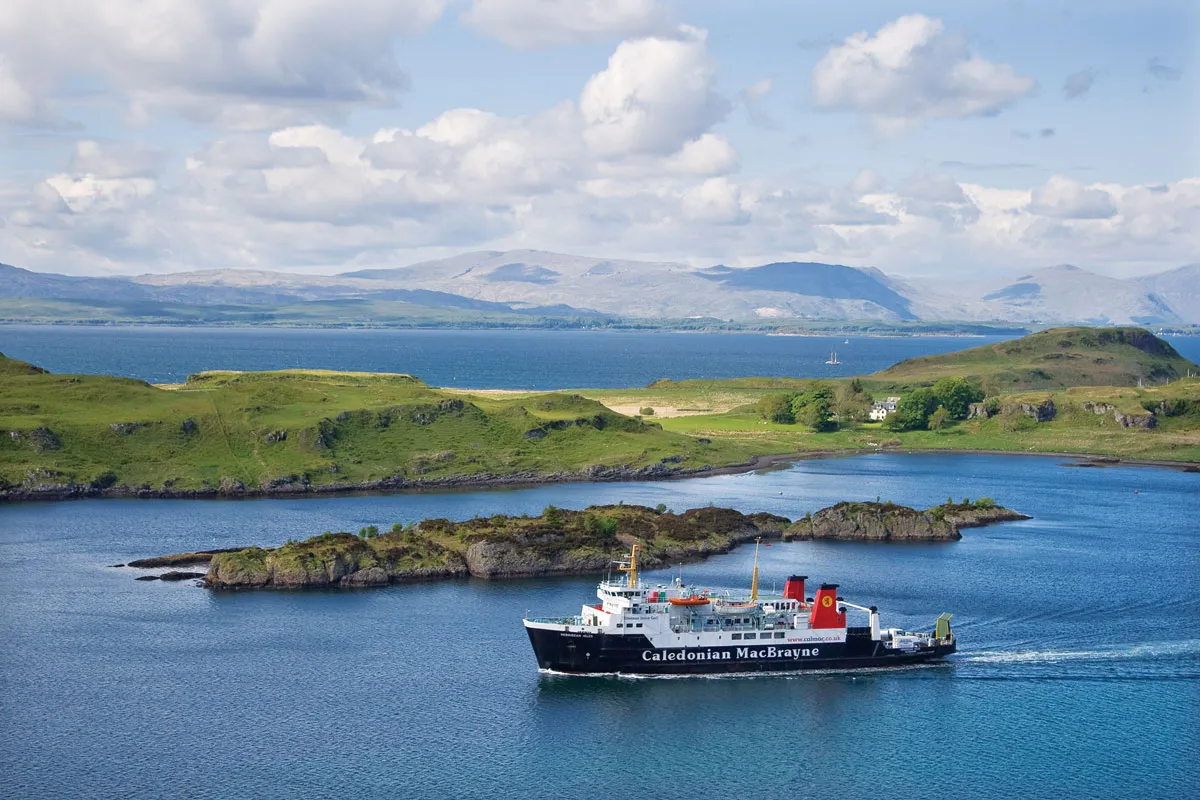
The most romantic option is CalMac ferry, which offers multiple route options. Two people plus car, from £85-£190. calmac.co.uk
Stornoway, Benbecula and Barra have flights from Glasgow, Edinburgh, Inverness and Aberdeen, operated by either Loganair (loganair.co.uk) or Eastern Airways (easternairways.com). High season fares range from £189-£300 return.
Main image: View of Harris on the Sound of Taransay, Western Isles, Scotland/Credit: Getty
Mark Rowe's new book: Guidebook, Outer Hebrides, The Western Isles of Scotland from Lewis to Barra, is out on 3 April. Published by Bradt www.bradtguides.com
